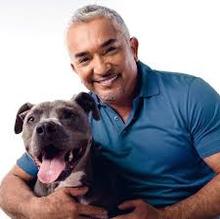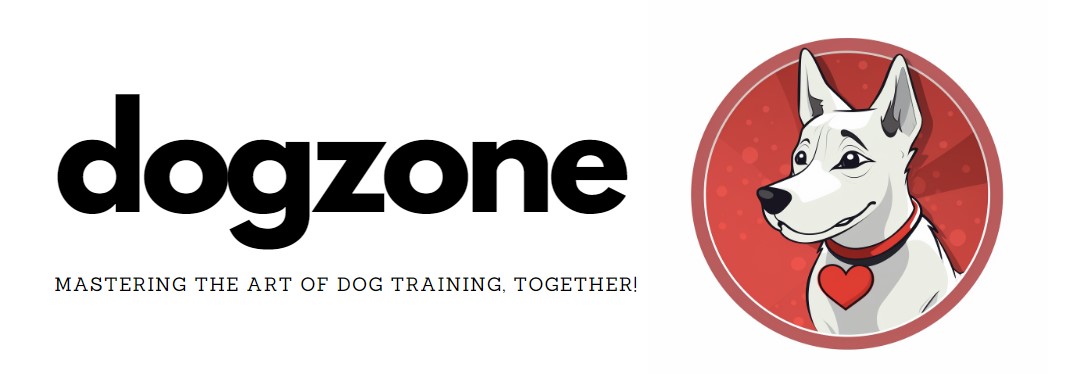The World Canine Organization recognises 339 breeds of dogs, and since you’re reading this, it’s probably safe to assume you’re looking for which of these breeds are the easiest dogs to train, for your needs.
The answer isn’t as simple as you may think. The easiest dogs to train aren’t always the smartest, prettiest, or ones with perfect pedigrees, it’s the ones who are most suitable for their intended purpose.
Every dog has a job, even if it’s a simple one like being a faithful companion. Some dogs take to their roles more easily than others, so in this article we’ll explore various breeds and which are best suited for certain purposes.
Finding the Easiest Dogs to Train for Your Task
Any dog can be trained with the proper amount of time, commitment, and patience from the owner. An owner must be committed to training practices willing to go through a process of trial and error, find out what works for their dog.
Some dog breeds are predisposed to certain behaviors and job types which can make the training process easier OR more difficult for the owner.
Take for example the Australian Shepherd. These dogs, who are thought to have descended from the Border Collie, were bred to be superior herders and imported to the US for this very purpose; although very good at their job, sometimes their temperament and energy level is too much for an inexperienced owner.
The AKC website explains, “Aussies exhibit an irresistible impulse to herd, anything: birds, dogs, kids. This strong work drive can make Aussies too much dog for a sedentary pet owner. Aussies are remarkably intelligent, quite capable of hoodwinking an unsuspecting novice owner. In short, this isn’t the pet for everyone.”
FINAL THOUGHT
Before you can find the easiest dogs to train for your particular task, we must first establish WHAT your dog’s job will be.
Finding the Right Personality and Size
The three most important factors for selecting a dog is temperament, energy level, and size, take these personality traits into account when browsing for your new companion, these are vital for making sure the dog will be a good fit for your household.
Temperament
Family Dogs
First and foremost you want a friendly, mild-mannered dog, who will get along well with all members of the household. Some dogs simply do not like children or certain genders of humans, while these dogs may be great for a single person, they just will not do as a family pet. Labradors, bulldog breeds, and the Hungarian Vizsla all make fantastic pets for families with kids.
Service Animals
A service animal should be even-tempered and not overly excitable.
Working Dogs
Working dogs should be focused and have a desire for obedience and pleasing their owner; a hunting or herding dog that is disobedient can stray off and be injured by cars or other animals. You may think a high prey drive would be essential for dogs with these types of jobs but often it can be counterproductive, making them liable to injuring the animals they should be herding or retrieving. Golden Retrievers and Basset Hounds are great examples of hunting dogs with lower prey drives.
Trick Dogs
A dog with the potential to learn elaborate tricks will be eager to please, energetic, and very intuitive toward their owners. Jack Russells and German Shepherds are typically great at learning fun tricks, and most importantly they enjoy learning them!
Energy Level
Family Dogs
Your dog needs to match your family’s energy level. A couch potato breed like brachycephalic (flat-faced) English Bulldogs will not be a good fit for an active family who enjoys hiking several times a week. The same is true for a sedentary family who is looking into a very active breed like a Jack Russell who’s needs can go unfulfilled by more laid-back owners.
Service Animals
Service animals should have a moderate energy level, high enough to give them the desire to work but not so high that they are bouncing around and uncontrollable.
Working Dogs
Working dogs should have a high energy level; however, their owner will need to keep their energy levels in check with lots of stimulation and exercise.This will cut down on negative behaviours like being destructive, chasing pets, and herding children.
Trick Dogs
Trick dogs should be high energy but not so highly-strung that they lose focus and refuse to follow your commands. Keep in mind that a high energy pup can become a very well-behaved dog with the right training regime.
Size
Family Dogs
Contrary to popular belief, smaller dogs are not always the right fit for families with small children. Children are often quite rough with animals, though it is probably unintentional, small dogs are more prone to injuries from being mishandled or dropped. Small dogs are often more quick to bite than larger breeds since they are more easily intimidated, although this isn’t always the case. Large dogs are sturdier and generally have a more gentle and laid-back persona, which can be a good thing with an excitable toddler.
Service Animals
Consider the task your dog will be performing, a teacup Yorkie will have a hard time leading his owner as a seeing-eye dog. Whereas someone who requires an emotional support animal may prefer a smaller dog that they can keep close by in a handbag or a sling.
Working Dogs
Herding dogs typically should be midsize to large breeds. Hunting dogs can be any size depending on what animal they are trained to hunt. The small and mighty Dachshund was bred to flush out badgers and beagles are a favourite choice for rabbit dogs. Whereas Golden Retrievers are a popular choice for retrieving ducks since they have a “gentle mouth” that doesn’t damage the meat.
Trick Dogs
Trick dogs can be any size.
BOTTOM LINE
No matter what the breed or background of the dog, remember that training takes time and effort on the part of the owner. A breed’s predisposition to certain behaviours or tasks can either help or hinder the training process.
Family-Oriented Breeds
Choosing the right dog for your family is paramount for many reasons, mainly because this animal will be sharing your living space for many years! Secondly, a very destructive or high-strung dog can add more stress and work for parents. Remember that children become attached, even if you decide it isn’t working out.
Don’t just adopt or buy a dog on a whim, make sure you know the dog’s background and personality before you bring him home. Set your family up for success by taking the time to get to know the dog before inviting him into your life.
Don’t Rely on Breed Stereotypes
American Staffordshire Terriers, also known as Pit Bulls, have gotten a terrible reputation in recent years being targeted by breed-specific legislation that labels them as an “aggressive” breed. This is simply not the case, although often used for the disturbing practice of dog fighting, “pit bulls” were the family dog of choice in the 19th century, earning them the nickname “Nanny Dogs”.
Bull dog breeds rank on Cesar Millan’s top 10 best breeds for family dogs list.

“The great advantage of bulldogs?
They’re sturdy, so they can take anything that rambunctious kids throw at them, while they’re not very energetic.
End result? A dog that will put up with a lot!
They’re also not picky about where they live, so both small apartments and large houses are fine.”
— Cesar Millan
IMPORTANT NOTE
Remember that just because a dog is great with children, does not mean that it will be easily trained to obey house rules.
Take the beagle, for example, a friendly loving breed with a high prey drive and is often distracted by their sense of smell. Beagles are just as likely to snuggle you on the couch as to ignore your commands in lieu of chasing squirrels and digging through the trash.
BOTTOM LINE
It is important that you do not to judge a book by its cover, just because a dog is a Labrador doesn’t mean it is going to be great with children.
You must realise that dogs, like humans, are individuals and should be treated as such. Consider the dog’s personality taking into account their temperament, energy level, and size.
Service Dogs
The Americans with Disabilities Act (ADA) defines service dogs as canines who are trained to aid and carry out tasks for individuals who have physical, medical, and mental limitations.
Service dogs come in many shapes and sizes; there is no limitation on breeds who can perform service work however some can be more easily trained and better suited for specific tasks.
Guide Dogs
Guide dogs are often used by the visually impaired to help them navigate the world around them, dogs performing this task should be larger breed who is very focused. Labrador Retrievers are a great choice for this type of work since they are eager to please and very owner-focused.
Medical Alert Dogs
Medical Alert dogs can perform functions from alerting that a seizure is about to take place to identifying allergens in an environment.
The AKC website explains that “Their training is similar to that of a police dog learning to track scents or drugs. Breeds that most commonly work as allergy alert dogs are the Poodle, the Golden Retriever, and the Portuguese Water Dog.”
Larger breeds such as the Golden Retriever and Labrador are great for seizure and diabetic alert dogs since they forge strong bonds with their owners, are innately caring, and learn quickly. Their size plays a vital role in this as well, since a seizure dog will need to lay on their owner during an episode to reduce chances of self-injury.
Psychiatric Support Dog
Psychiatric Support Dogs are often prescribed to people suffering from debilitating mental illnesses that hinder their ability to perform daily tasks, the most common diagnoses for people who require these support animals are PTSD, agoraphobia, and severe anxiety.
Borzois are well-suited and are very receptive to training for this type of task. The AKC website recommends this breed because of their, “ intelligence, independence, and keen sense of awareness.”
BOTTOM LINE
There is no clear-cut answer about which breed best performs the functions of a service dog. Size, task requirements, and temperament must all be considered when choosing a service animal.
Working Dogs
Herding Dogs
The herding instinct is ingrained into certain breeds, but training them to control this instinct is another matter. Cesar Millan explains, “the innate herding instinct of breeds in this group will develop into problem behavior if not satisfied. Owners must provide regular exercise and mental stimulation to keep their dog happy and healthy.”
The ease of training a herding dog depends entirely on the owner’s dedication and persistence–these are much trickier breeds to train and require a lot of work.
Hunting and Tracking Dogs
Dogs can be used for all manners of hunting and tracking, from retrieving kills to locating bodies. The hound group and retriever breeds top picks for these types of jobs.
Though typically stubborn in other types of training, beagles excel in hunting small animals and tracking; the AKC praises this breed’s flexibility stating, “Beagles have great tracking ability and originally worked as rabbit hunters. From the field they went to the airport where they work for U.S. Customs & Border Patrol as narcotics and agriculture detector dogs. You can also see the Beagle out and about as a bed bug detector due to his strong nose.”
Retriever breeds are also an excellent choice for hunting small animals since as their name suggests, they were bred to retrieve things, and are known for their gentle mouth and desire to please.
Other great choices are:
- Irish Setters
- Plott Hounds
- Basset Hounds
- Coonhounds
BOTTOM LINE
Herding breeds require little training to execute their task; however they can be quite challenging in other aspects of life–these dogs will need lots of exercise to perform to their fullest ability. Hounds make excellent hunting dogs, though their nose tends to get the best of them, pay close attention to obedience training since hunting can be a dangerous sport for untrained dogs.
FAQ – Easiest Dogs to Train
What dog breed is the smartest? Which breed is the dumbest?
There are no “smart” or “dumb” breeds, only those who are predisposed to certain behaviors and tasks. The perceived intelligence level means nothing for a dog with no training. Untrained dogs will behave like untrained dogs. Which is the most obedient dog breed?
This is a tough question to answer, though some breeds like retrievers and German Shepherds are more prone to obeying simply because of their keen desire to please, the simple answer is a well-trained dog IS the most obedient dog.
The Wrap Up
There is no perfect breed; each has it’s own attributes and predispositions; it is up to the owner to hone these skills and curb unwanted tendencies.
In the words of Cesar Millan, “a smart dog is just potential without a human willing to put in the time and effort to train and channel the dog’s intelligence. While all dogs are trainable, it’s important to understand your dog’s inherent abilities in order to know how to motivate him and bring out his natural intelligence.”
With pets come lots of responsibility, make sure you are up for this challenge before bringing a new dog into your home.



Leave a Reply